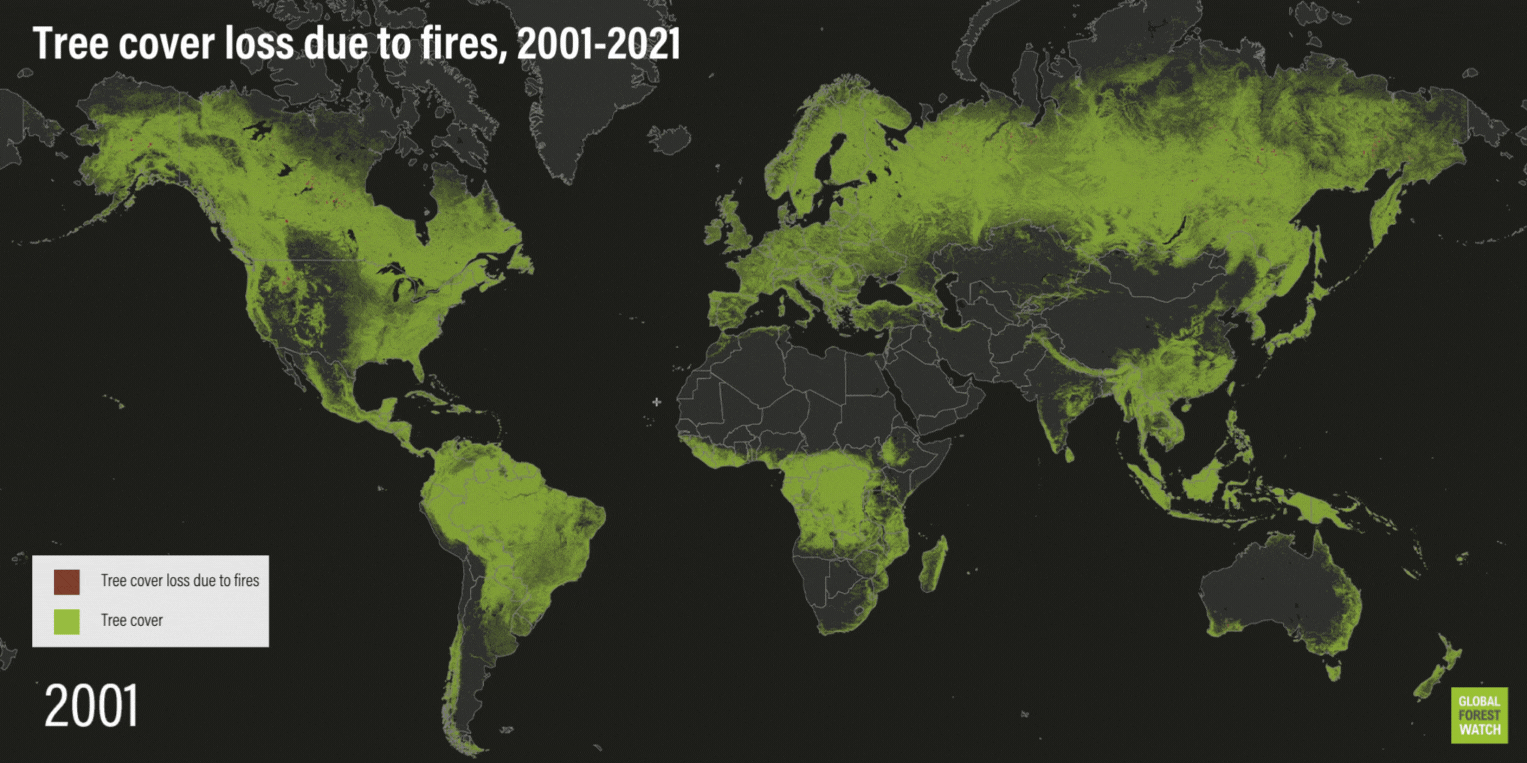As global warming hits countries causing longer heatwaves and dry weather conditions, wildfires have become more frequent and intense, according to scientists. A new study, analyzing data from 2001 to 2019, confirms: “Forest fires now result in 3 million more hectares of tree cover loss per year compared to 2001 — an area roughly the size of Belgium”.
Millions of hectares of forests are destroyed every year due to forest fires with global warming and land use only worsening this situation. At the same time, the effect is cyclical, as wildfires themselves contribute to greenhouse gas emissions, deteriorating the state of climate change. Forest fires also negatively impact the provision of ecosystem services and economic activities, putting public health at risk.
In 2022, various parts of the globe have recorded increased wildfire activities due to prolonged heat waves combined with dry weather conditions. For instance, the Amazon region in Brazil has recorded the highest number of August fires in the last 10 years with Brazil’s National Institute for Space Research reporting about 31,513 fire alerts in the region. Blazes have destroyed 3.2 million hectares of forests in Russia’s Siberia. Tens of thousands of hectares of forest in France, Spain, and Portugal have been torched due to the extreme forest fires recorded in southwestern Europe. In August alone, France lost 7,000 hectares of forest in a region where, a month before, 20,000 hectares had been destroyed by fires.
“The scale and persistence of the fires in the southwest of Europe, leading to the highest emissions for Europe in 15 years, was extremely concerning throughout the summer. The majority of the fires occurred in places where the changing climate has increased the flammability of the vegetation,” said the Copernicus Atmosphere Monitoring Service Senior Scientist and wildfire expert, Mark Parrington.
Boreal forest fires are a part of ecosystem dynamics. Often ignited by lightning strikes, boreal fires release important nutrients into the soil. Around 70% of all fire-related tree cover loss over the past 20 years has taken place in boreal regions, with wildfires surging by a rate of approximately 110,000 hectares (3%) annually since 2001. In contrast, in the humid tropics, fires are mainly caused by humans.
New research from the University of Maryland’s Global Land Analysis and Discovery laboratory reveals that forest fires are more intense at present and destroy twice as many trees as 20 years ago. Scientists believe the typical forest fire season now destroys 3 million more hectares of trees compared to 2001, accounting for over a quarter of global tree cover loss over the last two decades. In 2021, only 9.3 million hectares of tree cover were lost due to the extreme wildfires.
Douglas Morton, a global fire expert and chief of the Biospheric Sciences Laboratory at NASA’s Goddard Space Flight Center, said: “We’re seeing hotter and faster fires. We are seeing examples where climate change has increased the length of the fire season, allowing these fires to grow larger. It’s a now thing. It’s not a future risk. It’s happening already.”
Fig.1. Tree cover lost due to fires, 2001-2021

Source: World Resources Institute
Non-fire-related tree cover loss occurs due to human-induced mechanical clearing for agriculture, logging, or nature-prompted wind damages and river meanderings.
Fig.2. Tree cover loss due to fires compared to other drivers of loss, 2001-2021
Source: World Resources Institute
Scientists believe countries can improve forest resilience by changing their interaction, that is, ending deforestation and limiting agricultural techniques, including slash and burn. At the same time, improved forest fire monitoring systems also promise to be helpful. Alexandra Tyukavina, assistant research professor at UMD’s GLAD laboratory that also led the study, noted:
“We need to have timely information on where forest fires are happening and to educate the public on safe fire behaviors. It is also important to incentivize fire-safe alternatives to land management practices that might result in escaped forest fires, such as burning of logging and crop residue.”

